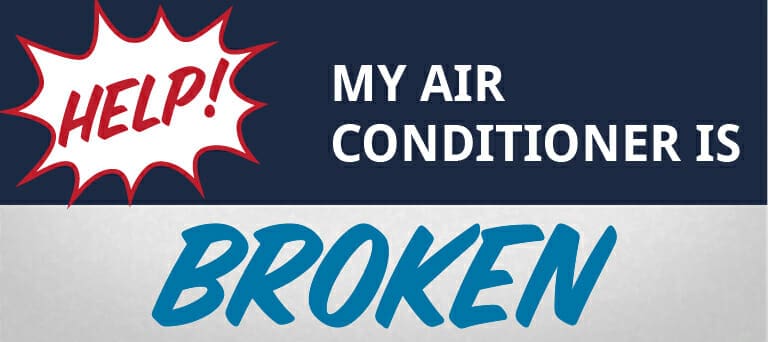
Help! My Air Conditioner Isn’t Working
When temperatures rise during the warmer spring and summer months, the last thing you want to find out is that your air conditioner isn’t working properly or, even worse, isn’t working at all. In most cases, you’ll want to consult the pros. However, here are some tips to help you diagnose any problems, determine whether or not your air conditioner is functioning, and decide when it’s time to contact a professional.
Your Air Conditioner Isn’t Cooling Your Home
If your air conditioner is not properly cooling your home, it may be an easy fix or you may need the assistance of a home cooling professional. Don’t panic! The information below will help you to determine how to proceed to get it working properly again.
Does your home have central air conditioning?
Yes, my home has central air.
First check to confirm that your outdoor unit has power and will run. If it doesn’t, start by checking your thermostat to confirm that your thermostat is in the on position and set for cooling if applicable. If it is, and still not running, check your electric panel to ensure the electric breaker has not popped or that a fuse has blown. If all appears to be okay, but your air conditioner will still not run, you should contact a home cooling professional.
If your unit is running and appears to be functioning properly, but is not cooling your home properly, start by checking to ensure your thermostat is properly set and adjusted. If it is, then check to make sure your air filter is not overly dirty or plugged with debris. If the air filter is dirty or plugged, you will then either need to wash it or replace it, depending upon what type of filter you have. You’ll typically find your filter near your furnace or air handler; which is usually located in your basement, attic, or a utility closet.
Also check to ensure that your outdoor air conditioning unit is clear of plants, weeds, dirt, or debris. If something is blocking your unit, it will prevent proper air flow through the outdoor coil which will cause your unit to either not run, or run inefficiently.
Once you have confirmed that the thermostat is set properly, that the air filter has been cleaned or replaced, and the outdoor unit is clear; then set your temperature several degrees lower than the current setting. This should allow your unit to run for an extended period of time.
If after about an hour your home isn’t noticeably cooler, you most likely either have a dirty evaporator coil or your air conditioner is low on refrigerant.
The evaporator coil is important in converting the liquid refrigerant in your system to a gas. As the air in your duct system passes through the evaporator coil, the warm and humid air is extracted from your home, and replaced with cool conditioned air. When it becomes dirty, your air conditioner cannot cool at maximum efficiency. Cleaning the evaporator coil will require opening and removing parts of your system to properly clean the area.
Additionally, the refrigerant in your system needs to be at the proper level to maximize the efficiency of your system and the amount of cool conditioned air it can provide to your home. If it is too low (or too high), your system may not be able to provide you with comfort level or temperature you desire.
If your air conditioner is producing a foul odor it could mean a number of things. Liquid may have built up from a leak in the system, your air conditioner filter may be dirty, or your refrigerator coils or drain pan may contain an accumulation of mold and mildew. The best way to remove odor from your air conditioner is to perform a complete cleaning of your system from top to bottom. Often, the smell could result from a combination of the problems mentioned above.
All of these conditions will require you to contact a home cooling professional to have them properly resolved. Additionally having your system serviced and cleaned annually can usually prevent either of these conditions from happening.
If after having either of these conditions corrected, your system still does not provide you with the comfort level or temperature you desire, you may want to confirm that your air conditioning system is properly sized.
No, my home doesn’t have central air.
If you use individual cooling units for different areas in your home, try a similar experiment by adjusting the individual temperature setting of the malfunctioning air conditioner. If after an hour the problem persists, the cause could be any number of issues.
Unplug your unit(s) and remove the front cover of your air conditioner, clean the cover with a washcloth, check the coils, and look at all exterior parts to ensure the problem isn’t due to air flow blockage. If you’ve tried all of these suggestions and after some time your air conditioner still appears to be undercooling, contact a home cooling professional or an appliance store. They will be able to tell you whether or not your air conditioner is low on refrigerant, if the thermostat has malfunctioned, or if the air conditioner needs to be replaced.
What’s Next?
Unfortunately, due to the complicated nature of air conditioning mechanics, as well as the various makes and models, there’s no way to tell exactly why your unit may not be operating properly without consulting a certified professional. If you’ve tried all of the troubleshooting techniques in this article and are still experiencing issues with your air conditioner, contact one of our home comfort specialists for a free in-home evaluation.
